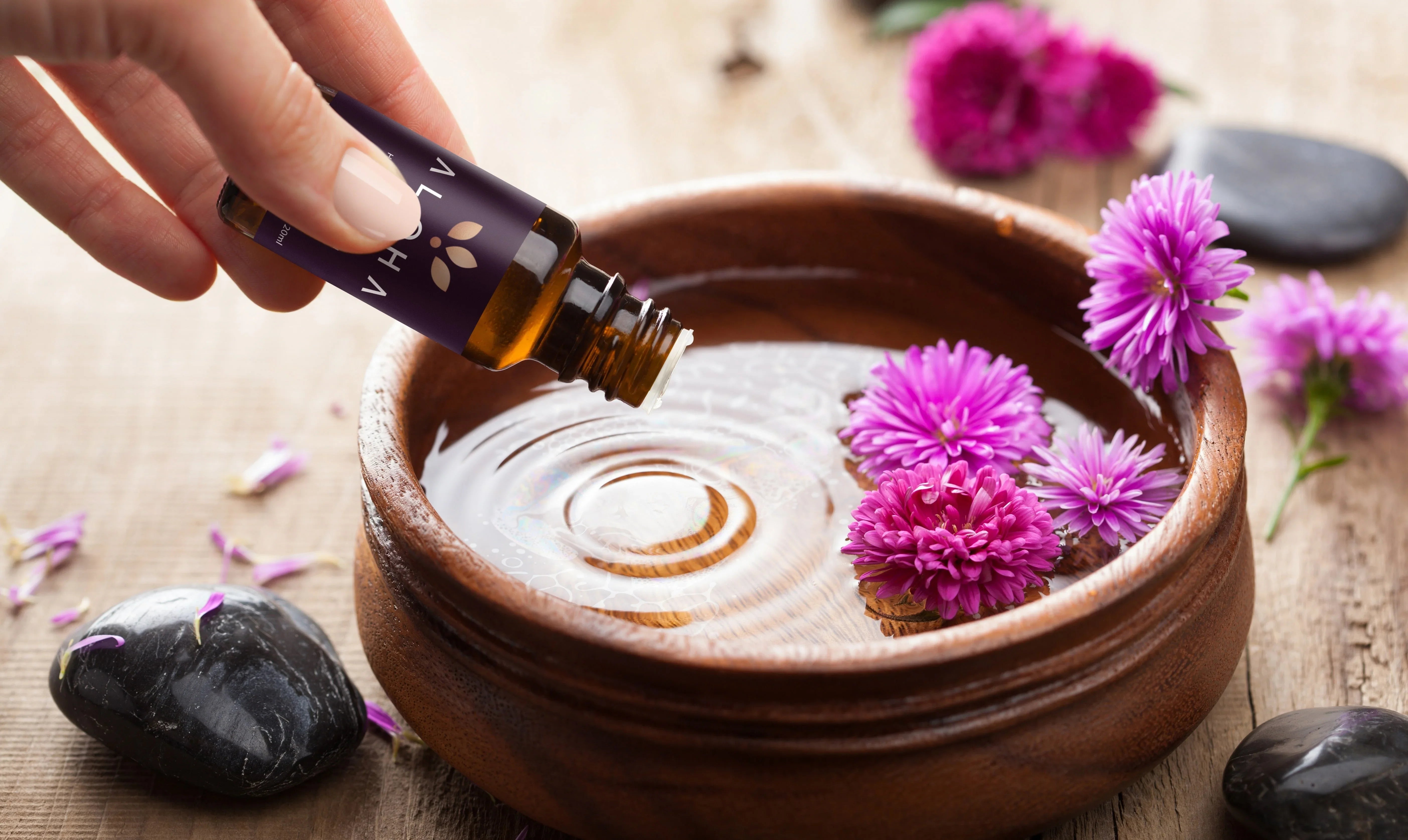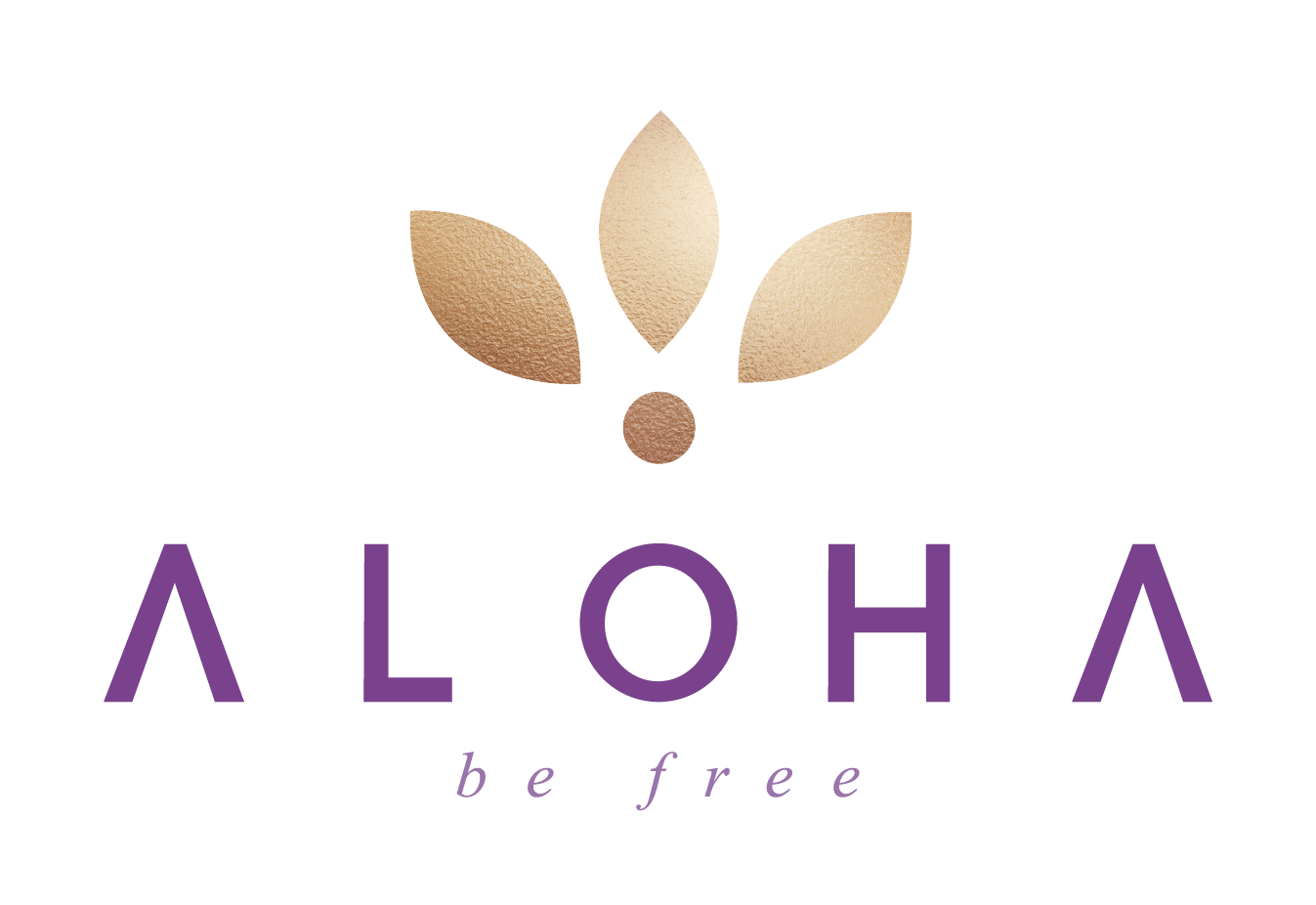Now Reading: The Soul of Plants: An Intro to Essential Oils

The Soul of Plants: An Intro to Essential Oils
Post 001
At Aloha, we believe that every essential oil has a story to tell. Each drop embodies the spirit of the earth, the care of growers, and the wonder of nature’s alchemy. For centuries, essential oils have been a bridge connecting humanity to Mother Nature. Ancient alchemists revered them as the “soul of plants,” recognizing them as the purest and most concentrated expression of a plant’s essence.
Cherished for their captivating aromas, therapeutic benefits, and remarkable versatility, they have stood the test of time as a natural treasure. Whether you're discovering them for the first time or seeking to deepen your knowledge, this guide will provide you with the foundation you need to embrace their benefits and transformative potential. By exploring the soul of plants, we open ourselves to a deeper appreciation of their role in enhancing our lives.
Table of content
The Origins of Aromatherapy
The use of aromatic plants for healing and wellness is a tradition as old as civilization itself. Across cultures and centuries, ancient societies like the Egyptians, Indians, Persians, Chinese, and Greeks documented methods for creating healing ointments, medicinal oils, and aromatic as well as healing perfumes in their texts. These rituals and practices laid the foundation for what we now know as aromatherapy.
Ayurvedic Medicine
Among these traditions, Ayurveda—the traditional Indian system of medicine—stands out as one of the world’s oldest forms of holistic healing. For over 5,000 years, Ayurveda has harnessed the power of plants and their extracts for therapeutic purposes. Sacred Ayurvedic texts, such as the Vedas written around 2000 B.C., highlight the use of more than 700 plants and substances—including sandalwood, ginger, myrrh, and cinnamon—for both medicinal and spiritual purposes (IFA, n.d.).
Egyptians

The term "essential oil" arises from the concept that these oils capture the very “essence” or “soul” of a plant’s aroma and beneficial properties, encapsulating the spirit and healing potential of nature in its purest form.
What are Essential Oils?
They are the heart and soul of plants, captured in highly concentrated extracts derived from various parts like leaves, peels, flowers, bark, roots, and alsoseeds (Tisserand Institute, n.d.). These precious oils embody the natural essence and aromatic compounds of plants, offering both a delightful fragrance and a world of therapeutic possibilities.
Essential oils are far more than just fragrant extracts; they are intricate blends of volatile organic compounds (VOCs) derived from plants. These natural molecules are the cornerstone of essential oils’ unique aromas and therapeutic effects, offering benefits for both mind and body. Known for their quick evaporation at room temperature, VOCs release their enchanting aromas into the air—greeting you instantly when you open a bottle or diffuse these botanical treasures (ScienceDirect, 2015).
Unlike traditional oils such as olive or coconut oil, essential oils are not true oils because they lack fatty acids. Instead, their magic lies in their unique chemical composition—molecules primarily made of carbon and hydrogen (PubMed, 2010). This complex and natural chemistry serves as the foundation of their transformative properties, delivering therapeutic benefits through both inhalation and topical application.
Every essential oil boasts a distinct chemical composition that defines its aroma, benefits, and safety considerations. Let’s explore some key components that make these oils so extraordinary:
- Terpenes: Like limonene or pinene, shape the distinct aromas and therapeutic effects of essential oils. Limonene, found in citrus oils, offers a fresh, uplifting scent; while pinene, in pine and rosemary, provides a crisp, invigorating aroma.
- Phenols: Compounds like thymol and eugenol bring antiseptic and antioxidant power. Thymol in thyme oil as well as eugenol in clove oil are prized for their protective and cleansing qualities.
- Aldehydes: Citral and cinnamaldehyde add bold, distinctive fragrances and antimicrobial benefits. Citral delivers a lemony freshness from lemongrass; while cinnamaldehyde offers cinnamon’s warm, spicy aroma.
- Esters: Known for their calming and relaxing properties, esters like linalyl acetate, found in lavender oil, carry a soft and floral scent that soothes the mind and body.
- Ketones: Promote renewal and clarity. Camphor, found in rosemary and camphor tree oils, supports respiratory health and stimulates the senses.
Why Purity Matters
Synthetic fragrances can mimic scents but lack the complex, therapeutic benefits of pure essential oils. This is why sourcing high-quality, unadulterated oils is key for enjoying their full potential.
Each drop of essential oil carries the plant’s wisdom and vitality, offering us a profound connection to the natural world. Whether you’re enjoying their fragrance, embracing their therapeutic benefits, or blending them into your daily rituals, they are a gift from nature, bringing the spirit of Aloha to your wellness journey.



Nature’s bounty: vibrant orange peels for citrus notes, delicate petals for floral aromas, and rugged bark for earthy, woody scents.
How are They Extracted?
The process of extracting essential oils is a delicate art and science. Several methods are used, each tailored to the specific plant and its properties:
Steam Distillation
Steam distillation is the most commonly used method for capturing the essence of plants like lavender, peppermint, and eucalyptus. By gently passing steam through the plant material, the aromatic compounds are released as vapor. This vapor is then cooled and condensed, separating the pure essential oil from water. This timeless process respects the integrity of the plant, delivering oils that carry its true pure and vibrant nature. For delicate oils like Ylang Ylang, fractional distillation separates the essence into distinct grades, ensuring each layer captures its unique aromatic and therapeutic qualities.
Cold Pressing
Cold pressing is a simple, sustainable method perfect for citrus oils like lemon, orange, and grapefruit. The rinds of the fruit are carefully pressed to release their bright, refreshing oils without the use of heat. This gentle process preserves the vibrant aroma and beneficial properties, bringing the sun-kissed spirit of these fruits into your home.
Enfleurage (Traditional Method)
Enfleurage is a traditional, artisan method for capturing the subtle fragrance of delicate flowers like jasmine. Fresh petals are layered on natural fats, which slowly absorb their aromatic essence. This process is repeated until the fat becomes infused with the flower’s scent, creating a fragrant pomade. This pomade is then carefully processed to extract the oil. Rooted in care and patience, enfleurage delivers rare, high-quality oils.
Solvent Extraction
For delicate flowers like jasmine and rose, solvent extraction offers a way to carefully capture their exquisite fragrance. Using a safe solvent, the aromatic compounds are gently dissolved and concentrated into a rich, luxurious product called an "absolute." Absolutes hold the pure heart of these flowers, making them ideal for perfumes and high-quality products that embody elegance and grace.
CO2 Extraction
CO₂ extraction is a modern, eco-friendly technique that uses carbon dioxide to gently draw out the full spectrum of aromatic compounds. By avoiding heat, this method preserves the plant’s delicate properties, resulting in pure, vibrant oils that reflect the beauty of nature. This cutting-edge process brings a clean, powerful essence, allowing you to connect with the pure spirit of nature through each drop.
Each method requires precision to maintain the integrity of the oil, ensuring that the final product truly represents the plant’s essence. (Britannica, 2025)

Uses and Benefits
Essential oils offer a multitude of benefits, encompassing physical, emotional, and spiritual well-being. Here are some of their most notable uses:
Aromatherapy
The practice of using these oils for therapeutic benefits, is perhaps the most well-known application. Inhaling them can:
- Promote relaxation and reduce stress (e.g., lavender, chamomile).
- Enhance focus and mental clarity (e.g., rosemary, peppermint).
- Uplift mood and combat depression (e.g., bergamot, lemon)
Skincare and Beauty
Essential oils address various skin concerns:
- Tea tree oil: Acne-prone skin
- Rose oil: Hydration and anti-aging.
- Frankincense: Scar healing and skin rejuvenation
Health and Wellness
Many possess antimicrobial, anti-inflammatory, and immune-boosting properties:
- Eucalyptus: Alleviates respiratory issues.
- Ginger: Aids digestion and eases nausea
- Peppermint: Relieves headaches and muscle tension
Spiritual Practices
They have long been used in spiritual rituals to deepen meditation, enhance mindfulness, and purify spaces. Sandalwood, frankincense, and patchouli are among the favorites for such practices.
DIY Products
They are a versatile addition to your DIY projects. Craft homemade candles and soaps infused with captivating aromas, or create natural cleaning products that are both effective and eco-friendly. For a soothing bath experience, add a few drops of your favorite essential oil to warm water to relax, unwind, and rejuvenate your senses.

Popular Essential Oils
Here’s a closer look at some widely used essential oils and their primary benefits:
| Tea Tree | Rosemary | Eucalyptus | Lemon | Peppermint |
|---|---|---|---|---|
| Antimicrobial and antifungal properties | Boosts mental clarity and memory | Clears nasal congestion | Detoxifies and cleanses | Relieves headaches and nausea |
| Treats acne and dandruff | Supports hair health and growth | Soothes sore muscles | Enhances mood and combats fatigue | Boosts energy and focus |
Safety Guidelines for Essential Oils
Despite their many benefits, essential oils are potent substances that require mindful use. Here are some key guidelines:
1. Dilution
An essential oil should never be applied directly to the skin without dilution. Carrier oils like coconut, jojoba, or almond oil are commonly used to dilute them, reducing the risk of irritation (MedlinePlus, 2023).
2. Patch Testing
Before using a new essential oil, perform a patch test by applying a small amount of diluted oil to your skin. Wait 24 hours to ensure there is no allergic reaction (Tisserand Institute, n.d.).
3. Internal Use
While some essential oils can be ingested under professional guidance, this practice is generally discouraged without consulting a certified aromatherapist or healthcare provider. Many oils can be toxic when consumed (NCCIH, 2023).
4. Storage
They should be stored in dark glass bottles away from heat and sunlight to preserve their potency (IFA, n.d.).
5. Consultation
Pregnant women, children, and individuals with specific health conditions should seek professional advice before using any essential oil (MedlinePlus, 2023).

Always prioritize safety and start small when incorporating essential oils into your routine.
Final Thoughts
Essential oils are a gateway to a more natural, holistic lifestyle. They empower you to create a home and wellness routine that is not only healthier, but deeply nurturing as well. Start small, experiment with different oils, and embrace the journey of discovery and connection. With just one essential oil, you can effortlessly bring the essence of nature into every aspect of your life. By tapping into the soul of plants, we embrace a time-honored tradition that bridges ancient wisdom with modern wellness practices. Whether you are seeking relaxation, healing, or spiritual enrichment, the soul of plants offers a natural and profound way to enhance our lives.
Discover the transformative power of essential oils and find your own path to wellness today.







Leave a comment